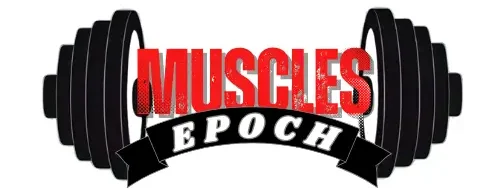3 Day Exercise Split:If you’re short on time but serious about building muscle, the 3 day exercise split might be the perfect plan for you. This training approach divides your workouts into three targeted sessions: push, pull, and legs—allowing you to train smarter, not longer. Whether you’re a beginner or someone returning to the gym, this structure offers a balance between recovery and intensity to promote steady gains. In this post, we’ll break down why the 3-day exercise split is so effective and how you can follow it to build strength and size faster than ever.
Why a 3 Day Exercise Split Works for Fast Muscle Growth
Efficient Use of Time and Recovery
One of the key benefits of a 3 day exercise split is how efficiently it balances training volume with recovery. Unlike full-body routines that may fatigue multiple muscle groups in a single session, this split isolates specific movement patterns (push, pull, legs), allowing you to target muscles with intensity while giving others time to rest and rebuild.
Training three times per week leaves ample rest days, which is crucial for muscle repair, especially for beginners and intermediates who need more time to recover between workouts. This schedule reduces the risk of overtraining and helps maintain motivation by preventing burnout.
Additionally, by focusing on fewer muscle groups per session, workouts are shorter and more focused—typically lasting 45–60 minutes. This time-efficient approach fits easily into busy lifestyles while still delivering solid hypertrophy and strength results. With proper nutrition, sleep, and hydration, your body maximizes recovery, making each workout count.
Focus on Compound Movements
Compound movements are the cornerstone of any effective workout plan—especially in a 3 day exercise split. These multi-joint exercises engage several muscle groups at once, allowing you to lift heavier, burn more calories, and build muscle more efficiently. In a split routine, compound exercises provide the structural foundation of each day’s workout.
For example, on Push Day, you’d focus on movements like the bench press, overhead press, and dips—each targeting the chest, shoulders, and triceps simultaneously. On Pull Day, exercises like barbell rows, deadlifts, and pull-ups engage your back, biceps, and rear delts. Finally, Leg Day includes staples such as squats, lunges, and Romanian deadlifts to activate the quads, hamstrings, glutes, and calves.
Prioritizing compound lifts means you spend less time doing isolated exercises and more time building functional strength. These movements also improve coordination, core stability, and balance—key attributes not just for aesthetics but also for overall athletic performance. For beginners, mastering these lifts with proper form sets a strong foundation for long-term progress.
Balanced Muscle Targeting Across the Week
A well-designed 3 day exercise split ensures balanced development by dividing training into push, pull, and leg-focused workouts. This structure guarantees that no major muscle group is neglected, helping you build a symmetrical, functional physique.
- Push Day targets the front side of the upper body—primarily the chest, shoulders, and triceps. These muscles work together during pushing movements like bench presses and shoulder presses.
- Pull Day emphasizes the back, biceps, and rear shoulders, focusing on pulling movements such as rows and pull-ups. This not only improves posture and back strength but also balances out the pushing muscles trained earlier in the week.
- Leg Day is dedicated to the lower body, hitting all the major muscle groups like the quads, hamstrings, glutes, and calves. Including compound lifts like squats or lunges ensures complete leg development and strength.
By spreading muscle group focus throughout the week, this split prevents overtraining, allows sufficient recovery, and promotes even hypertrophy. It also minimizes muscle imbalances, which can lead to injury and poor performance over time. Whether you’re a beginner or intermediate, this approach gives you a solid training foundation while keeping workouts varied and engaging.
The Weekly Workout Breakdown: Push, Pull, Legs

Day 1 – Push Day (Chest, Shoulders, Triceps)
Push Day focuses on exercises that involve pushing motions—primarily working the chest, shoulders, and triceps. This training day lays the foundation for upper body strength and size, particularly targeting the front deltoids, pectorals, and all three heads of the triceps.
Key Muscle Groups Worked:
- Chest (Pectoralis Major & Minor): Primary movers in pressing exercises like the bench press and push-ups.
- Shoulders (Anterior Deltoids): Assist in all overhead and pressing movements.
- Triceps: Responsible for elbow extension, playing a key role in all push exercises.
Sample Exercises:
- Flat Dumbbell Press or Bench Press – A foundational chest exercise that also engages the front delts and triceps.
- Overhead Shoulder Press – Builds pressing power and shoulder definition.
- Dumbbell Lateral Raise (for shoulder isolation) – Helps develop shoulder width and symmetry.
- Dips or Close-Grip Push-Ups – Emphasize the triceps while also involving the chest and shoulders.
Training Tips:
- Begin with compound lifts like presses to maximize strength output when you’re freshest.
- Use moderate to heavy weight for 3–4 sets of 6–10 reps on main lifts.
- Focus on form and full range of motion, especially in shoulder movements, to prevent injury.
- End the session with triceps isolation work to fully fatigue and build arm definitio
By dedicating a full day to pushing muscles, you ensure these key upper-body groups receive enough volume and recovery to grow stronger. Push Day sets the tone for the rest of your 3 day exercise split, building the foundation of pressing strength needed for functional movement and aesthetics.
Day 2 – Pull Day (Back, Biceps)
Pull Day targets the muscles responsible for pulling movements—primarily the back and biceps, along with the rear deltoids and forearms. This training day focuses on developing pulling strength, improving posture, and building a thicker, more defined upper body.
Key Muscle Groups Worked:
- Latissimus Dorsi (Lats): The broadest muscles of the back, essential for width and V-taper appearance.
- Rhomboids & Trapezius: Support scapular movement and postural control.
- Rear Deltoids: Often neglected, these stabilize and support shoulder health.
- Biceps Brachii & Brachialis: Responsible for elbow flexion and essential for arm aesthetics.
- Forearms: Support grip strength, especially in pulling movements.
Sample Exercises:
- Bent-Over Rows (Barbell or Dumbbell): A powerful compound movement that hits the entire upper and mid-back.
- Lat Pulldowns or Pull-Ups: Great for developing lat width and overall back strength.
- Face Pulls or Rear Delt Flys: Isolate and strengthen the rear shoulders.
- Barbell or Dumbbell Bicep Curls: Classic isolation for bicep growth.
- Hammer Curls: Targets the brachialis and forearms, adding thickness to the arms.
Training Tips:
- Focus on mind-muscle connection, especially with back exercises, to ensure proper engagement.
- Use controlled tempo and full range of motion for maximum muscle activation.
- Prioritize compound lifts like rows early in the session when energy is high.
- Finish with biceps isolation to fully fatigue the arms and enhance arm development.
A dedicated Pull Day ensures that the muscles often overlooked in push-dominant routines receive focused attention. Strengthening your posterior chain not only improves aesthetics but also helps balance your physique, prevent shoulder injuries, and enhance overall performance in both lifting and daily activities.
Day 3 – Leg Day (Quads, Hamstrings, Glutes, Calves)
Leg Day is often considered the most demanding of the three training days—and for good reason. This session focuses on the major muscle groups of the lower body: quadriceps, hamstrings, glutes, and calves. Strong legs are essential not only for balance and power but also for supporting overall muscle development and athletic performance.
Key Muscle Groups Worked:
- Quadriceps: The large muscles on the front of your thighs, critical for knee extension and movements like squats and lunges.
- Hamstrings: Located on the back of your thighs, they support hip extension and knee flexion, crucial for running, jumping, and injury prevention.
- Glutes (Gluteus Maximus, Medius, Minimus): The powerhouse muscles for hip extension and overall lower body strength.
- Calves (Gastrocnemius and Soleus): Important for ankle mobility, balance, and explosive movements.
Sample Exercises:
- Squats (Bodyweight, Goblet, or Barbell): A foundational compound movement that targets nearly every lower body muscle.
- Romanian Deadlifts or Dumbbell Deadlifts: Excellent for developing hamstring and glute strength.
- Walking Lunges or Step-Ups: Enhance unilateral strength, coordination, and balance.
- Glute Bridges or Hip Thrusts: Great for glute isolation and activation.
- Calf Raises (Seated or Standing): Target the calves and improve lower-leg strength and endurance.
Training Tips:
- Warm up thoroughly with dynamic stretches and mobility drills to prevent injury.
- Focus on proper squat and lunge form—knees should track in line with your toes, and the core should remain engaged.
- Progressive overload is key—add weight gradually over time or increase reps to stimulate growth.
- Don’t neglect calf training, as well-developed calves improve both athletic performance and aesthetics.
A strong lower body translates to better performance in nearly every physical activity—from sports to everyday tasks like climbing stairs or lifting heavy objects. Committing to leg day not only builds muscle but also promotes hormonal balance, as large muscle group training stimulates testosterone and growth hormone production. Skipping leg day means missing out on a crucial part of your physique and strength journey.
Maximizing Your Results: Tips for Faster Growth

Progressive Overload Strategies
Progressive overload is the cornerstone of building muscle and gaining strength—whether you’re a beginner or an experienced lifter. It refers to the gradual increase of stress placed on the body during training to continually challenge the muscles and stimulate growth. Without progressive overload, your body adapts, and progress plateaus.
3 Day Exercise Split:Why Progressive Overload Matters
Your muscles respond to stress by repairing and growing stronger. But if that stress remains the same over time (same weight, reps, or sets), your muscles have no reason to adapt further. Implementing overload ensures constant improvement in size, strength, and endurance.
Effective Strategies to Apply Progressive Overload:
- Increase Weight Gradually
- Once you’re comfortably completing your target reps and sets with proper form, increase the load slightly—typically by 2.5% to 10%.
- Example: If you’re dumbbell pressing 20 lbs for 10 reps with ease, next session try 22.5 lbs.
- Add More Reps or Sets
- You don’t always need heavier weights. Increasing your volume (reps × sets) can create the needed stimulus.
- Example: Instead of 3×10, try 4×12 with the same weight before increasing it.
- Improve Tempo and Control
- Slowing down the eccentric (lowering) phase or adding pauses increases time under tension, challenging the muscle in a new way.
- Example: A 3-second lower on squats builds more strength than a quick bounce.
- Shorten Rest Periods
- Reducing rest between sets (e.g., from 90 seconds to 60) increases intensity and demands more from your cardiovascular and muscular systems.
- Increase Training Frequency
- For certain muscle groups or movements, training them more often in the week with proper recovery can boost adaptation.
- Example: Adding a second light leg day to reinforce glute or quad strength.
- Enhance Range of Motion
- Full, controlled range of motion leads to greater muscle activation.
- Example: Going deeper in squats or stretching further on Romanian deadlifts (without compromising form).
Tracking for Success
Use a training log or app to record:
- Sets, reps, and weight used
- Rate of perceived exertion (RPE)
- Notes on form or difficulty
This helps you spot trends, prevent overtraining, and ensures you’re steadily progressing without blindly repeating the same workouts.
When it comes to maximizing the results of any workout plan—especially a focused 3-day exercise split—recovery, sleep, and nutrition are just as important as the training itself. These elements work synergistically to repair muscle tissues, replenish energy stores, and prepare your body to grow stronger and perform better in subsequent workouts.
Recovery: The Foundation for Muscle Growth
Muscle growth doesn’t happen during the workout; it happens during rest. When you exercise, you create small micro-tears in your muscle fibers. Recovery allows these fibers to repair and adapt, leading to increased strength and size.
- Active Recovery: Engage in light activities like walking, stretching, or yoga on rest days to promote blood flow and reduce muscle stiffness.
- Rest Days: Avoid training the same muscle groups on consecutive days. Use your off days for rest or low-intensity movement to avoid overtraining.
- Listen to Your Body: If you feel excessive fatigue or soreness, give yourself extra rest to prevent injury and burnout.
Sleep: Your Ultimate Performance Enhancer
Sleep is often underestimated but is critical for muscle repair, hormone regulation, and cognitive function.
- Muscle Repair: Growth hormone, which plays a key role in muscle growth and fat metabolism, is primarily secreted during deep sleep stages.
- Mental Focus and Motivation: Adequate sleep improves concentration and workout performance, reducing the risk of injury from poor technique.
- Recommended Amount: Aim for 7 to 9 hours of quality sleep per night to optimize recovery and overall health.
Nutrition: Fueling Growth and Recovery
3 Day Exercise Split: What you eat before and after workouts dramatically influences your progress.
- Protein Intake: Protein provides the building blocks (amino acids) necessary for muscle repair. Aim for 1.2 to 2.0 grams of protein per kilogram of body weight daily, spread evenly across meals.
- Carbohydrates: They replenish glycogen stores that fuel your workouts and recovery. Include complex carbs like oats, brown rice, and quinoa.
- Healthy Fats: Essential for hormone production, including testosterone, which supports muscle growth. Sources include avocados, nuts, and olive oil.
- Hydration: Staying hydrated ensures optimal muscle function and nutrient transport. Drink water consistently throughout the day.
- Timing: Consuming a balanced meal or snack with protein and carbs within 1-2 hours post-workout can accelerate recovery and muscle synthesis.
Supplements: Helpful but Not Required
While whole foods should be your primary source of nutrients, certain supplements can support your goals:
- Whey Protein: Convenient for hitting daily protein targets.
- Creatine: Enhances strength and power output.
- BCAAs: May reduce muscle soreness and improve recovery.
In summary, prioritizing recovery, getting quality sleep, and maintaining balanced nutrition are essential pillars to complement your workout efforts. Together, they ensure you not only build muscle effectively but also maintain long-term health and fitness success.
3 Day Exercise Split:Tracking Workouts and Avoiding Plateaus
One of the most effective ways to ensure consistent progress with your 3-day exercise split is tracking your workouts. Keeping a detailed record of your exercises, weights, sets, reps, and how you feel during each session helps you stay accountable, identify improvements, and make necessary adjustments. Without tracking, it’s easy to lose sight of progress and risk hitting a plateau.
Why Tracking Matters
- Visual Progress: Seeing how much weight you’ve lifted or how many reps you’ve increased over time motivates you to keep pushing forward.
- Identify Weaknesses: Tracking highlights areas where progress stalls, allowing you to modify your routine or technique to overcome obstacles.
- Avoid Overtraining: Monitoring fatigue and performance helps prevent burnout and injury.
How to Track Your Workouts
- Use a Training Log or App
- Write down each workout’s exercises, sets, reps, and weights.
- Note your energy levels, any soreness, or challenges faced.
- Popular apps like MyFitnessPal, Strong, or Jefit can make this process easy and organized.
- Set Clear, Measurable Goals
- Instead of vague goals like “get stronger,” aim for specific targets such as “increase dumbbell press weight by 5 lbs in 4 weeks.”
- Goals help you focus your training and track progress objectively.
- Record Additional Metrics
- Track rest periods, tempo (speed of movement), and perceived exertion (how hard the set felt).
- This provides deeper insights into workout intensity and helps refine your program.
Avoiding Plateaus
A plateau occurs when your progress stalls despite consistent training. This is a common challenge but can be overcome with smart strategies:
- Change Up Your Routine
- Vary exercises, order, or rep ranges every 4-6 weeks to shock muscles in new ways.
- Example: Swap dumbbell presses for push-ups or change from 8-12 reps to 4-6 reps with heavier weights.
- Increase Training Intensity
- Use progressive overload by adding weight, reps, or sets.
- Incorporate techniques like supersets, drop sets, or tempo changes to increase challenge.
- Focus on Recovery
- Plateaus sometimes stem from inadequate rest or nutrition.
- Ensure sufficient sleep, proper diet, and active recovery days.
- Assess Form and Technique
- Poor technique can limit progress and cause injury.
- Consider working with a trainer or recording yourself to ensure correct form.
Celebrate Small Wins
3 Day Exercise Split:Progress isn’t always linear. Celebrate improvements in strength, endurance, or technique—even if the scale or mirror doesn’t reflect immediate changes. Tracking helps you recognize these milestones, keeping motivation high.
In short, diligent tracking combined with smart adjustments is key to breaking plateaus and making continual gains with your 3-day exercise split. It empowers you to train smarter, stay motivated, and ultimately reach your fitness goals more efficiently.
Categorie
Start planning your bodybuilding with the bodybuilding guide, it's time to explore the muscles epoch.

